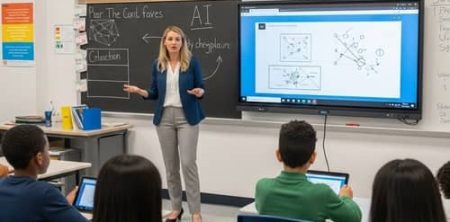In today’s digital era, modern education has evolved beyond traditional textbooks and chalkboards. A teacher now has access to numerous resources to make learning more engaging and effective for students. Among these resources, kids animated shows have emerged as powerful educational tools that combine entertainment with valuable life lessons and academic concepts. The colorful characters and captivating storylines of these shows have proven to be highly effective in capturing children’s attention and facilitating better retention of information.
Educational experts have recognized the potential of animation in classrooms, noting that visual learning often resonates more strongly with young minds. When teachers incorporate animated content into their curriculum, they create a multi-sensory learning experience that caters to different learning styles. This approach is particularly beneficial for visual learners who process information better through imagery and movement rather than text alone. Moreover, animation can simplify complex concepts through visual metaphors and scenarios that children can relate to and understand easily.
The strategic use of animated content allows educators to address various subjects in an integrated manner. For instance, shows like “Magic School Bus” seamlessly blend science concepts with adventure, making seemingly difficult topics accessible and interesting. Similarly, mathematics—often considered challenging by many students—becomes more approachable when presented through animated scenarios showing real-world applications.
Beyond academic subjects, animated shows often contain valuable social-emotional learning components. They present situations involving cooperation, problem-solving, empathy, and conflict resolution. Teachers can use these scenarios as starting points for classroom discussions, helping students develop critical thinking and emotional intelligence alongside traditional academic knowledge.
The implementation of animated content in classrooms has shown remarkable results in student engagement. When children are interested in the material, they naturally become more active participants in their education. This increased engagement often leads to improved academic performance and a genuine enthusiasm for learning. Teachers who successfully integrate animation into their teaching methods report higher attendance rates, better classroom participation, and improved retention of material.
Furthermore, animated shows can serve as cultural bridges in diverse classrooms. They often feature characters from various backgrounds and cultures, promoting inclusivity and global awareness. This aspect helps children develop an appreciation for diversity from an early age, preparing them for our increasingly interconnected world.
Teachers also value animated content for its ability to present information in manageable chunks with clear narratives. This structure helps children organize new knowledge systematically. The episodic nature of most animated shows allows teachers to focus on specific concepts in each session, building knowledge progressively without overwhelming students.
The accessibility of animated content has increased dramatically with technological advancements. Streaming platforms dedicated to educational content provide teachers with vast libraries of age-appropriate shows aligned with curriculum standards. Many of these platforms also offer supplementary materials like discussion guides and activities, making implementation easier for busy educators.
Research has consistently shown that children remember information better when it’s associated with positive emotions. The joy and excitement that animated shows generate create positive neural connections that enhance memory formation. Teachers leverage this psychological principle by connecting important lessons to the animated characters and stories that students love.
However, effective integration of animated shows requires thoughtful selection and presentation. The most successful teachers don’t use animation merely as entertainment or time-fillers but select content that directly supports learning objectives. They prepare viewing guides, pause for discussions at key moments, and follow up with activities that reinforce the lessons presented in the animations.
As we move forward in education, the partnership between teachers and educational animated content continues to strengthen. Professional development programs now often include training on media literacy and effective use of digital resources, including animation. This preparation ensures that teachers can maximize the educational potential of the animated content they bring into their classrooms.
In conclusion, the thoughtful integration of animated shows into educational settings represents a powerful teaching strategy that aligns with how children naturally learn. By combining entertainment with education, teachers create memorable learning experiences that resonate with students long after they leave the classroom. As technology and educational research continue to advance, we can expect even more innovative ways for animation to enhance teaching and learning in the future.

